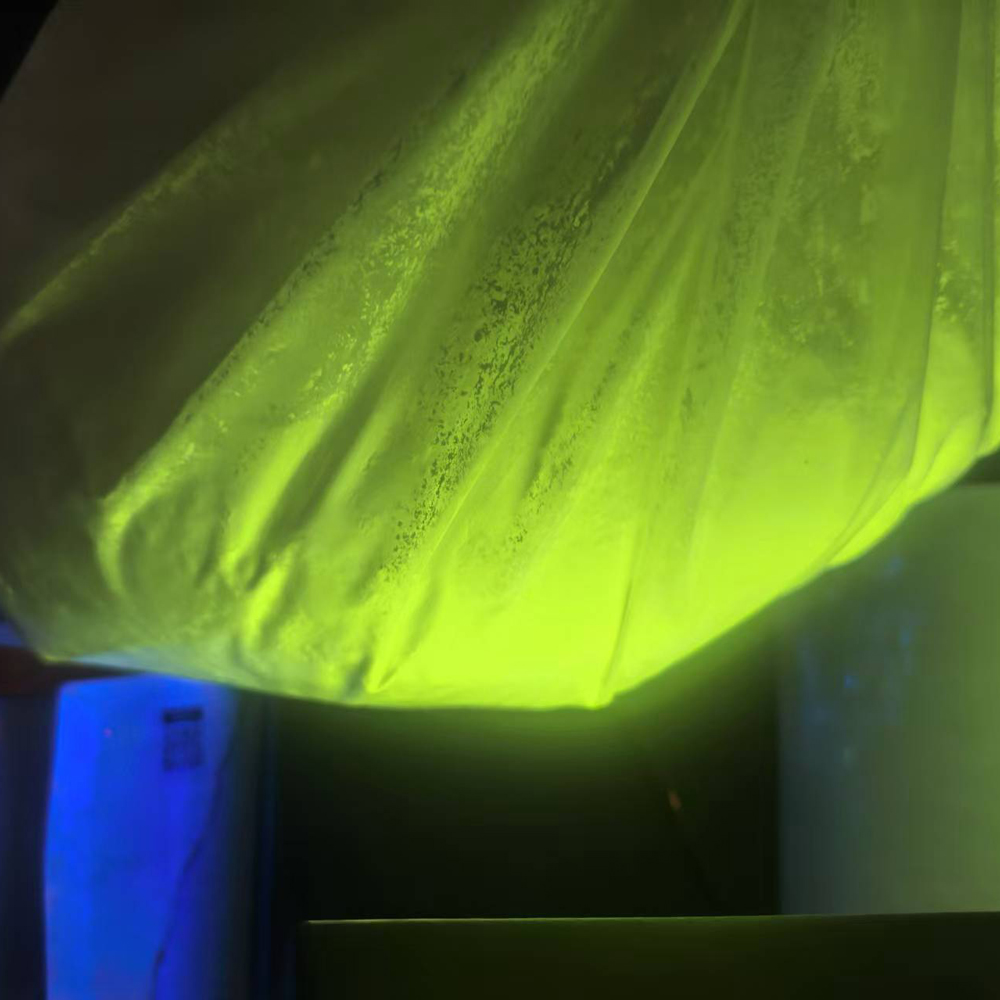Today, we successfully dispatched 50 kilograms of our premium invisible 365nm UV fluorescent pigment green powder to William in France. This shipment not only represents a significant business transaction but also reflects the growing global demand for this remarkable pigment. As we delve deeper into the world of 365nm UV fluorescent pigments, it becomes evident that they are revolutionizing multiple industries with their unique properties and diverse applications.

https://www.topwelldyes.com/uv-activated-pigment-365-nm-uv-security-pigment-uv-fluorescent-pigment-product/
Why are more and more companies choosing Qingdao Topwell Chemical’s UV fluorescent pigments? Follow me to explore this magical product
Understanding 365nm UV Fluorescent Pigments
UV fluorescent pigments are materials that absorb ultraviolet (UV) light and re – emit it as visible light, creating a vivid and intense glow. Among them, 365nm UV fluorescent pigments are specifically designed to be activated by UV light at a wavelength of 365nm, which is in the long – wave UV range. This particular wavelength offers several advantages. For example, compared to shorter – wavelength UV light sources, 365nm UV light is less harmful to human skin and eyes, making it more suitable for a wider range of applications.
These pigments are composed of special compounds, often including fluorescent dyes or rare – earth elements. When exposed to 365nm UV light, the electrons in the pigment molecules are excited to higher energy levels. As they return to their ground states, they release energy in the form of visible light, resulting in the characteristic fluorescence. The color of the fluorescence can vary depending on the specific chemical composition of the pigment, ranging from bright greens and blues to vivid red and yellow ,blue,green.
Why More and More Industries are Turning to 365nm UV Fluorescent Pigments
1. High Visibility and Aesthetic Appeal
In an increasingly competitive marketplace, standing out is crucial. 365nm UV fluorescent pigments offer an unparalleled level of visibility. In industries such as advertising and marketing, they are used to create eye – catching displays. For instance, in night – time advertising billboards, products coated with 365nm UV fluorescent pigments can glow brightly under UV – equipped streetlights or spotlights. This makes the advertisement more likely to be noticed by passers – by, increasing brand awareness.
In the world of art and design, these pigments open up new creative possibilities. Artists can use them to create works that have a completely different appearance under normal light and UV light. In galleries or art exhibitions, UV – reactive art pieces can add an element of surprise and interactivity for viewers. When the lights are dimmed and UV light is introduced, hidden images or details in the artwork suddenly come to life, providing a unique and memorable experience.
2. Safety and Security Applications
The security and safety sectors have found 365nm UV fluorescent pigments to be invaluable. In the field of document security, such as passports, visas, and high – value certificates, these pigments are used to create invisible or covert markings. These markings are only visible under 365nm UV light, making it extremely difficult for counterfeiters to replicate. For example, many countries have incorporated 365nm UV – activated security features into their currency. When a banknote is held under a UV lamp with a 365nm wavelength, specific fluorescent patterns or serial numbers become visible, helping bank tellers and currency verification machines quickly identify genuine currency.
In industrial safety, 365nm UV fluorescent pigments are used to mark emergency exits, safety equipment, and hazardous areas. In a factory or a large industrial complex, during a power outage or in a smoky environment, normal lighting may be ineffective. However, markings made with 365nm UV fluorescent pigments can be easily seen when illuminated by UV – flashlights, which are often part of emergency response kits. This ensures that employees can quickly and safely find their way out of the building or locate safety equipment in critical situations.
3. Compatibility with a Wide Range of Materials
Another reason for the growing adoption of 365nm UV fluorescent pigments is their excellent compatibility with various materials. They can be incorporated into plastics, resins, coatings, textiles, and even inks. In the plastics industry, for example, these pigments are used to color plastic products such as toys, decorative items, and automotive parts. The pigments blend well with the plastic matrix, resulting in a uniform and long – lasting fluorescent effect.
In the textile industry, 365nm UV fluorescent pigments are used to create unique and eye – catching fabrics. These fabrics can be used for fashion items, such as clubwear or sportswear, which are often worn in low – light or UV – lit environments. They can also be used for safety clothing, such as those worn by construction workers or cyclists, to increase visibility during night – time or in low – visibility conditions.
4. Environmental and Health Considerations
In today’s environmentally conscious world, industries are constantly looking for sustainable and non – toxic solutions. Many 365nm UV fluorescent pigments are designed to be eco – friendly and non – toxic. They do not contain harmful heavy metals or chemicals that can pose a risk to human health or the environment. For example, in the food and beverage packaging industry, where safety is of utmost importance, these pigments can be used to create attractive and UV – reactive packaging designs without the worry of contaminating the food products inside.
In addition, compared to some traditional pigments that require high – energy processes for production, the manufacturing of 365nm UV fluorescent pigments often involves more energy – efficient methods. This not only reduces the carbon footprint of the pigment production but also makes it more cost – effective in the long run for industries that use these pigments.
We anticipate engaging in discussions with you on the promising future of invisible UV fluorescent pigment technology.
Post time:
Aug-22-2025







